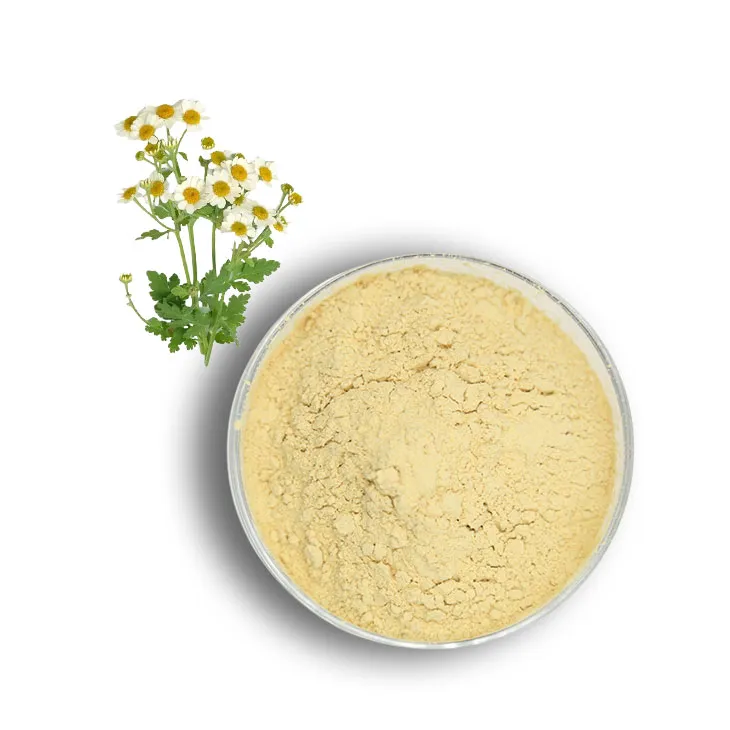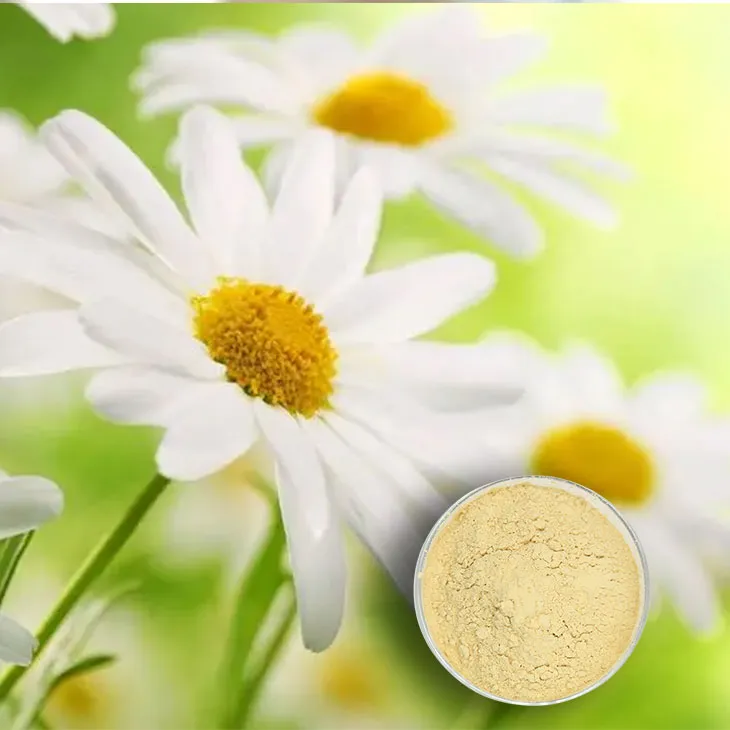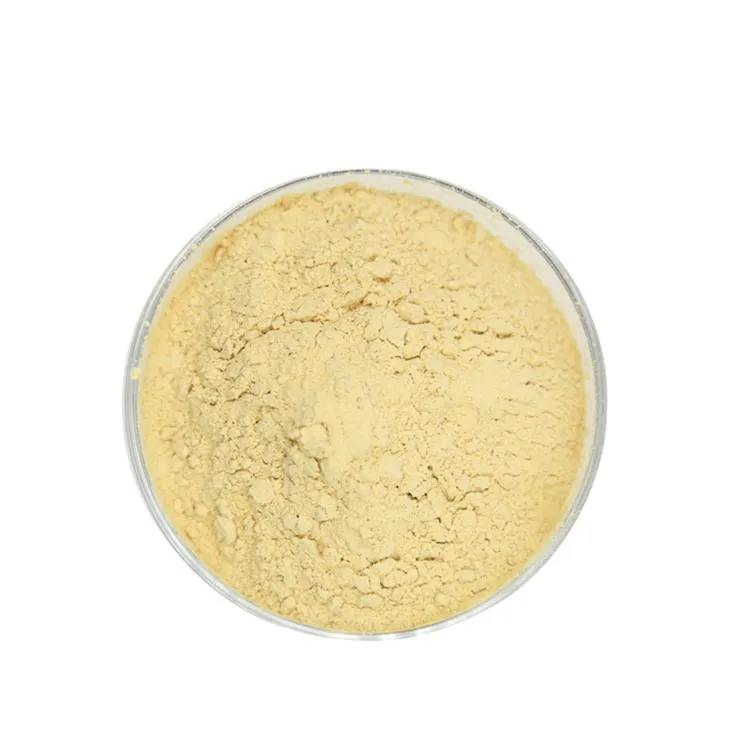- 0086-571-85302990
- sales@greenskybio.com
Supercritical Carbon Dioxide Extraction of Feverfew Extracts
2024-11-29

1. Introduction
Feverfew (Tanacetum parthenium) is a well - known herb that has been used for centuries in traditional medicine. It is native to southeastern Europe and Asia Minor but is now widely distributed. The plant contains a variety of bioactive compounds, such as sesquiterpene lactones, flavonoids, and essential oils, which are believed to be responsible for its medicinal properties. These properties include anti - inflammatory, analgesic, and antioxidant effects.
In modern times, there is a growing demand for natural products in various industries, including pharmaceuticals, cosmetics, and food supplements. The extraction of bioactive compounds from plants has become an important area of research. Traditional extraction methods, such as solvent extraction, may have some limitations, such as the use of toxic solvents, low extraction efficiency, and potential degradation of the active compounds. Supercritical carbon dioxide (CO₂) extraction has emerged as a promising alternative method for the extraction of Feverfew Extracts.

2. Supercritical Carbon Dioxide: Properties and Advantages
Supercritical CO₂ exists at a temperature and pressure above its critical point (Tc = 31.1 °C and Pc = 73.8 bar). At this state, it has unique physical properties that make it an ideal extraction medium.
2.1. Solvent Properties
Supercritical CO₂ has solvent - like properties similar to organic solvents. It can dissolve a wide range of non - polar and slightly polar compounds. For Feverfew Extraction, it can effectively extract sesquiterpene lactones and essential oils, which are the main bioactive components. Moreover, the solubility of substances in supercritical CO₂ can be adjusted by changing the temperature and pressure conditions. This allows for selective extraction of different compounds from the plant material.
2.2. Low Toxicity and Environmental Friendliness
One of the major advantages of supercritical CO₂ is its low toxicity. CO₂ is a natural component of the atmosphere and is non - flammable, non - explosive, and non - toxic. This makes it a much safer alternative to traditional organic solvents such as hexane or chloroform, which are often used in solvent extraction but are harmful to human health and the environment. In addition, supercritical CO₂ can be easily removed from the extract by simply reducing the pressure, leaving behind a pure extract without any solvent residues.
2.3. High Diffusivity and Penetration Ability
Supercritical CO₂ has a high diffusivity, which means it can quickly penetrate into the plant matrix and reach the target compounds. This results in a relatively short extraction time compared to traditional methods. The high penetration ability also ensures that the extraction is more complete, as it can access compounds that are located deep within the plant cells.

3. The Extraction Process of Feverfew with Supercritical CO₂
The extraction of feverfew using supercritical CO₂ typically involves several steps.
3.1. Sample Preparation
The first step is to prepare the feverfew sample. The plant material is usually dried and ground into a fine powder. This increases the surface area of the plant material, which is beneficial for the extraction process as it allows for better contact between the plant material and the supercritical CO₂.
3.2. Extraction Conditions
The extraction conditions, such as temperature, pressure, and extraction time, play a crucial role in determining the yield and quality of the extract.
- Temperature: The temperature affects the solubility of the compounds in supercritical CO₂. Generally, an appropriate temperature range is selected. For example, a temperature between 40 - 60 °C is often used for Feverfew Extraction. At lower temperatures, the solubility may be too low, resulting in a low extraction yield. At higher temperatures, there may be a risk of degradation of some heat - sensitive compounds.
- Pressure: The pressure also has a significant impact on the extraction. Higher pressures usually increase the solubility of the compounds in supercritical CO₂. Pressures in the range of 150 - 300 bar are commonly employed for feverfew extraction. However, increasing the pressure too much may also lead to the extraction of unwanted impurities.
- Extraction Time: The extraction time needs to be optimized. A longer extraction time may increase the yield, but it may also increase the extraction of non - target compounds. Typically, an extraction time of 1 - 3 hours is considered suitable for feverfew extraction.
3.3. Separation and Collection of the Extract
After the extraction, the supercritical CO₂ containing the dissolved compounds is separated from the plant material. This is usually achieved by reducing the pressure, which causes the CO₂ to return to its gaseous state and the dissolved compounds to be deposited. The extract is then collected for further analysis or use.

4. Analysis of the Feverfew Extracts Obtained by Supercritical CO₂ Extraction
Once the feverfew extracts are obtained, they need to be analyzed to determine their composition and quality.
4.1. Chemical Composition Analysis
Various analytical techniques can be used to analyze the chemical composition of the extracts. Gas chromatography - mass spectrometry (GC - MS) is a powerful tool for identifying and quantifying the volatile components in the extract, such as essential oils. High - performance liquid chromatography (HPLC) can be used to analyze the non - volatile compounds, such as sesquiterpene lactones and flavonoids. These techniques can provide detailed information about the types and amounts of bioactive compounds present in the extract.
4.2. Biological Activity Assays
In addition to chemical composition analysis, the biological activity of the extracts also needs to be evaluated.
- Anti - inflammatory Activity: The anti - inflammatory activity of the feverfew extract can be tested using in vitro and in vivo models. For example, in vitro assays can be carried out using cell lines such as macrophages, and the production of inflammatory cytokines can be measured. In vivo assays can involve animal models of inflammation, such as the carrageenan - induced paw edema model in rats.
- Analgesic Activity: The analgesic activity can be evaluated using pain models, such as the hot plate test or the acetic acid - induced writhing test in mice. These tests can measure the ability of the extract to relieve pain.
- Antioxidant Activity: The antioxidant activity can be determined by various methods, such as the DPPH (2,2 - diphenyl - 1 - picrylhydrazyl) radical scavenging assay or the ABTS (2,2' - azinobis - (3 - ethylbenzothiazoline - 6 - sulfonic acid)) radical cation scavenging assay. These assays can assess the ability of the extract to scavenge free radicals and protect cells from oxidative damage.

5. Applications of Feverfew Extracts Obtained by Supercritical CO₂ Extraction
The feverfew extracts obtained by supercritical CO₂ extraction have a wide range of applications in different industries.
5.1. Pharmaceutical Applications
Due to its anti - inflammatory, analgesic, and antioxidant properties, feverfew extract has potential applications in the pharmaceutical industry. It can be used as an ingredient in the development of drugs for the treatment of various inflammatory diseases, such as arthritis, and for pain relief. Additionally, the antioxidant properties of the extract may be beneficial in preventing oxidative stress - related diseases.
5.2. Cosmetic Applications
In the cosmetic industry, feverfew extract can be used in skincare products. The antioxidant and anti - inflammatory properties make it suitable for anti - aging and anti - acne products. It can help to protect the skin from free radical damage, reduce inflammation, and improve the overall appearance of the skin.
5.3. Food Supplement Applications
Feverfew extract can also be used as a food supplement. It can be added to dietary supplements in the form of capsules or powders. Consumers are increasingly interested in natural products for maintaining health, and feverfew extract can provide a natural source of bioactive compounds with potential health benefits.

6. Conclusion
Supercritical carbon dioxide extraction of feverfew extracts is a highly promising method. It offers several advantages over traditional extraction methods, including low toxicity, high selectivity, and environmental friendliness. The extracts obtained by this method have a wide range of applications in pharmaceuticals, cosmetics, and food supplements. However, further research is still needed to optimize the extraction process, improve the understanding of the biological activities of the extracts, and explore more potential applications. With the continuous development of technology and research, supercritical CO₂ extraction of feverfew extracts is expected to play an increasingly important role in the utilization of this valuable natural resource.
FAQ:
What are the main advantages of using supercritical carbon dioxide for feverfew extract extraction?
Supercritical carbon dioxide extraction of feverfew extract has several main advantages. Firstly, it can maintain the integrity of the active compounds in the extract. Secondly, it meets the strict requirements of modern industries in terms of purity and safety. This method is also environmentally friendly compared to some traditional extraction methods.
How does supercritical carbon dioxide interact with the components of feverfew during extraction?
Supercritical carbon dioxide has unique physical properties. It can solubilize the bioactive substances in feverfew based on its density and solubility characteristics. The solvating power of supercritical CO₂ can be adjusted by changing the pressure and temperature, which allows for selective extraction of different components from feverfew.
What are the potential applications of feverfew extract obtained by supercritical carbon dioxide extraction?
The feverfew extract obtained by supercritical carbon dioxide extraction has potential applications in anti - inflammatory, analgesic, and antioxidant areas. It can be used in the pharmaceutical industry for drug development, in the cosmetic industry for skincare products with anti - aging and anti - inflammatory properties, and also in the food industry as a natural antioxidant additive.
What factors need to be considered when optimizing the supercritical carbon dioxide extraction process of feverfew extract?
When optimizing the supercritical carbon dioxide extraction process of feverfew extract, factors such as pressure, temperature, extraction time, and the particle size of feverfew need to be considered. Different combinations of these factors can affect the extraction yield and the quality of the extract. For example, higher pressure and appropriate temperature may increase the solubility of the active compounds, but too long an extraction time may lead to the degradation of some components.
How does supercritical carbon dioxide extraction compare to traditional extraction methods for feverfew extract?
Compared to traditional extraction methods, supercritical carbon dioxide extraction has several distinct features. Traditional methods may use organic solvents which may leave residues and pose safety risks. Supercritical CO₂ extraction is cleaner as it leaves no or minimal solvent residues. Also, it can often achieve higher selectivity in extracting the desired bioactive components from feverfew, while some traditional methods may extract a wider range of compounds including unwanted ones.
Related literature
- Supercritical Fluid Extraction of Bioactive Compounds from Feverfew: A Review"
- "Optimization of Supercritical CO₂ Extraction of Feverfew for Enhanced Anti - Inflammatory Activity"
- "The Role of Supercritical Carbon Dioxide in Extracting High - Quality Feverfew Extracts"
- ▶ Hesperidin
- ▶ citrus bioflavonoids
- ▶ plant extract
- ▶ lycopene
- ▶ Diosmin
- ▶ Grape seed extract
- ▶ Sea buckthorn Juice Powder
- ▶ Beetroot powder
- ▶ Hops Extract
- ▶ Artichoke Extract
- ▶ Reishi mushroom extract
- ▶ Astaxanthin
- ▶ Green Tea Extract
- ▶ Curcumin Extract
- ▶ Horse Chestnut Extract
- ▶ Other Problems
- ▶ Boswellia Serrata Extract
- ▶ Resveratrol Extract
- ▶ Marigold Extract
- ▶ Grape Leaf Extract
- ▶ blog3
- ▶ Aminolevulinic acid
- ▶ Cranberry Extract
- ▶ Red Yeast Rice
- ▶ Red Wine Extract
-
Beetroot juice Powder
2024-11-29
-
Nettle Root Extract
2024-11-29
-
Avocado Extract Powder
2024-11-29
-
Tinospora cordifolia extract
2024-11-29
-
Acerola Juice Powder
2024-11-29
-
Pine bark Extract Powder
2024-11-29
-
Mulberry leaf Extract
2024-11-29
-
Aguaje Extract
2024-11-29
-
Dan Shen Root Extract/Salvia Root Extract
2024-11-29
-
Lemon Juice Powder
2024-11-29





















